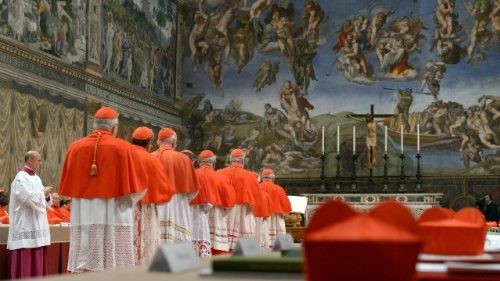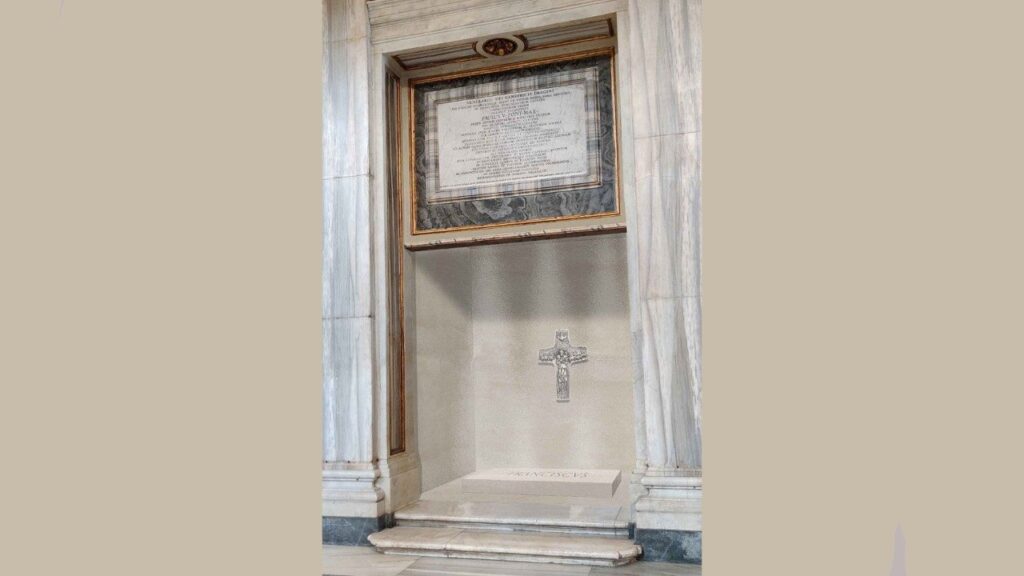Where to keep the ashes of the deceased?
Two answers from the Dicastery for Doctrine

Cardinal Zuppi had asked whether it was possible to keep them in common places similar to ossuaries, and whether a small part could be kept in a place meaningful to the deceased. Yes, in both cases. Any pantheistic, naturalistic or nihilistic misunderstanding must be avoided.
It will be possible to provide for a sacred place “for the accumulation and preservation in common of the ashes of the baptised deceased”, i.e. a communal cinerary where the individual ashes are reserved. This was stated by the Dicastery for the Doctrine of the Faith in response to two questions from the Archbishop of Bologna, Matteo Zuppi, on the subject of deceased believers undergoing cremation. The second response states that the ecclesiastical authority can also consider and evaluate the request of relatives to keep a “minimal part” of a deceased person’s ashes in a significant place in the deceased’s history.
Cardinal Zuppi, faced with the “increasing choice of cremating the deceased” and scattering the ashes in nature, also in order “not to let economic reasons prevail, suggested by the lower cost of scattering, and to give indications on the destination of the ashes, once the time limits for their conservation have expired”, wishing “to correspond not only to the request of the relatives, but above all to the Christian announcement of the resurrection of the bodies and the respect due to them”, has presented these questions. The first: “Taking into account the canonical prohibition to scatter the ashes of the deceased – similar to what happens in ossuaries – is it possible to establish a sacred place, defined and permanent, for the mixed accumulation and preservation of the ashes of the baptised deceased, indicating for each one the personal details”. And the second: “Can a family be allowed to keep part of the ashes of a relative in a place that is significant for the history of the deceased?
The Dicastery, in a text signed by Cardinal Prefect Victor Fernandez and approved by the Pope on 9 December, answers in the affirmative. First of all, it recalls that, according to the Instruction Ad resurgendum cum Christo 2016 (n. 5), “the ashes should be kept in a sacred place (cemetery), and also in a space specifically dedicated to this purpose, provided that it has been designated for this purpose by the ecclesiastical authority”. The reasons for this are cited, namely the need to “reduce the risk of removing the deceased from the memory and prayers of the relatives and the Christian community” and to avoid “forgetfulness and disrespect”, as well as “unseemly or superstitious practices”.
We are then reminded: “Our faith tells us that we will be resurrected with the same bodily identity that is material”, although “that matter will be transfigured, freed from the constraints of this world. In this sense, the resurrection will be in this flesh in which we now live”. But this transformation “does not imply the recovery of the identical particles of matter that formed the body”. Therefore, the resurrected body “will not necessarily be made up of the same elements it had before death. Since it is not a simple revivification of the corpse, resurrection can take place even if the body has been totally destroyed or dispersed. This helps us to understand why in many cineraries the ashes of the deceased are kept all together, without being kept in separate places”.
The Dicastery then underlines that “the ashes of the deceased come from material remains that were part of the person’s historical journey, to the extent that the Church has a special care and devotion for the relics of the saints. This care and remembrance also leads us to an attitude of sacred respect” towards the ashes, which “we keep in a sacred place suitable for prayer”.
To Zuppi the Dicastery therefore replies that “it is possible to provide a sacred place, defined and permanent, for the accumulation and communal preservation of the ashes of the baptised deceased, indicating for each one the personal details so as not to disperse the nominal memory”. The Church therefore admits the possibility of the ashes being placed in a common place, as is the case with ossuaries, but preserving the individual memory of each of the deceased. Finally, it is stated that, excluding “any kind of pantheistic, naturalistic or nihilistic misunderstanding”, in compliance with civil norms, if the ashes of the deceased are kept in a sacred place, the ecclesiastical authority “may consider and value the request of a family to duly preserve a minimum part of the ashes of their relative in a place significant” for their history.
In response to a question from the Vatican media, the Dicastery explained that the intervention and assessment of the ecclesiastical authority is not only canonical, but also pastoral, to help the family discern what choices to make, taking into account all factors. Given that some legislation does not permit the division of the ashes of the deceased, the Dicastery added that the second question arose from a dialogue between bishops from different countries to which Cardinal Zuppi gave voice, and considered the possibility from a theological and not a civil point of view, as was later clarified in the response.
Related

The Conclave will begin on May 7
Exaudi Staff
28 April, 2025
1 min

Cardinal Parolin at the Novendalia Mass: “Mercy leads us to the heart of faith”
Exaudi Staff
27 April, 2025
8 min

Thousands of faithful bid farewell to Pope Francis in St. Peter’s Square
Exaudi Staff
26 April, 2025
2 min

Francis’s Tomb: A Legacy of Humility and Closeness
Exaudi Staff
25 April, 2025
4 min
 (EN)
(EN)
 (ES)
(ES)
 (IT)
(IT)

